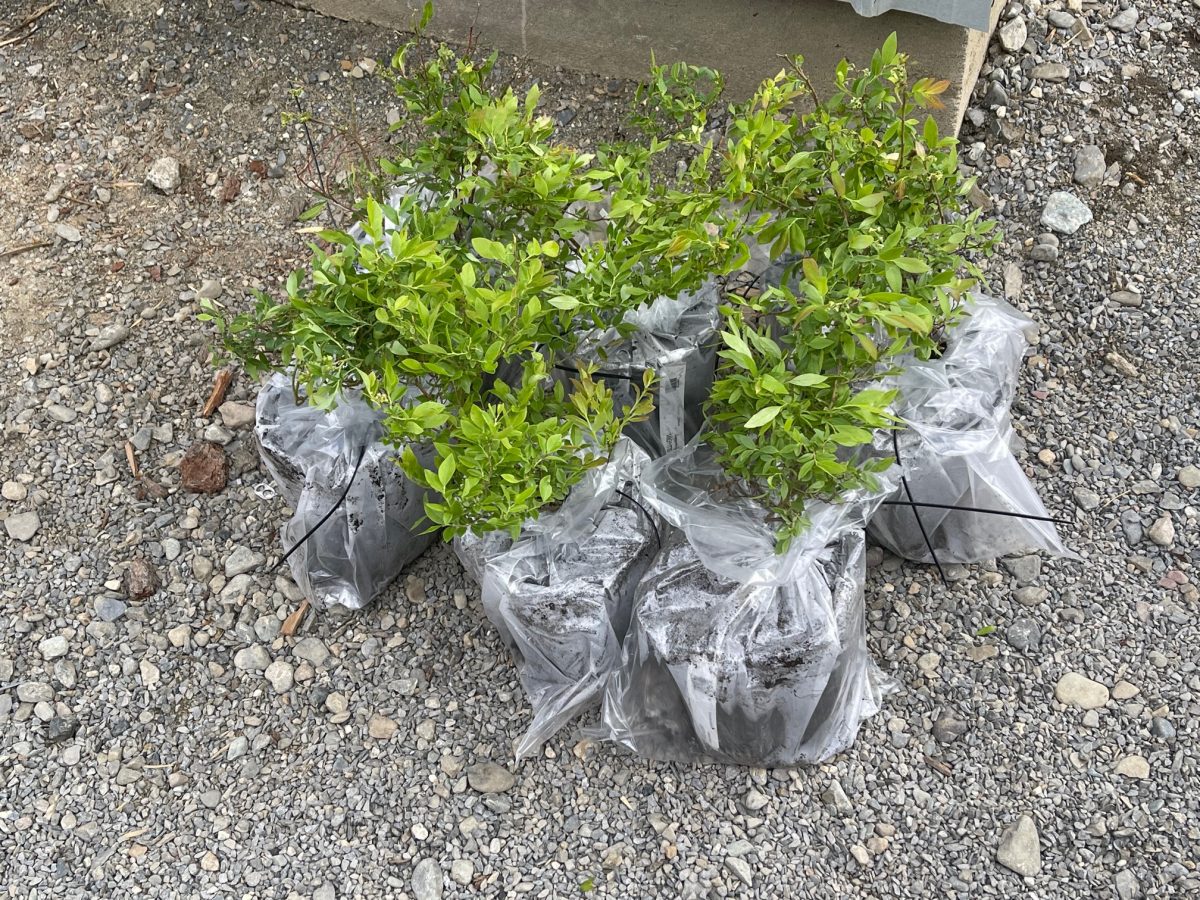I’m excited; the Blueberry Patch Moise and I are planning together is underway. Seven low brush shrubs came from New Hampshire via FedEx; I drove them up to Moise’s farm.
This is a landmark for me, the first farm crop I have ever planned mostly by myself.
Moise is away until Friday, so we decided to water them, keep them wrapped in plastic until Moise decides where he wants them to be planted. Moise has entrusted me to make any blueberry decisions necessary. He wants to be picking them by late June or early July.
The family and I pored through the planting instructions that came with the shrubs, and I printed out four or five more and brought them with me.
They showed me the planned site of Blueberry Row, as I call it. It’s a great stop with great draining and no food traffic, plus lots of sun.
I’ll check on them each morning. I feel like the Blueberry Father. I researched these first seven shrubs, and they are perfect for our climate and Moise’s soil and his plans to sell them.
More than 30 other lowbush blueberry shrubs are heading for Bedlam Farm from New Jersey. They will be the heart of Moise’s blueberry planning for 2021; the new ones are four feet tall and should yield berries this summer if we get them in the ground soon.
I’m expecting them by Friday. I’ll have to and request a horse and cart to get them to Moise’s farm.
We tended to the new arrivals. They’ll be fine until Friday.
We have bags of peat moss on hand, and the girls are digging 2 1/2 diameter holes for the plants. We’ll put peat moss and soil into the hole, 50/50, and add a liquid vitamin that the Amish have been using for years and make themselves.
Moise has water, immigration, and soil system he’s laboriously built on the hill. When the rest of the plants come, we will be ready.
Moise trusted me to choose the shrubs and outline their care. We have to focus a bit on blueberry protection – deer, bears, dogs, and birds eat them. I took pictures of several Great Pyrenees Mountain Dogs to show to Moise.
He’s got close to 60 plowed acres they crops, and the sheep and goats he wants to get will need some protection. Two Great Pyrenees or Alsatian Herding Dogs could save him a fortune in fencing and lost groups, he would need fencing, of course, but not the most expensive kind.
As a rule, the Amish do not buy expensive purebred dogs; they love skanky farm dogs who seem to know what to do. We’ll see,
The first seven plants look good and strong (one looks a bit drained, but they are working on him). This batch of brushes won’t offer berries until next year.
The others should bear fruit quickly.


Livestock guardian dogs are not used INSTEAD OF fencing, they are used IN ADDITION TO fencing. In your area, it is possible to get a trained young guard for a couple of hundred dollars. They are not expensive.
Yes, I am quite aware of that, so is Moise. But guard dogs can permit the use of fencing that is much cheaper than farms without them. We understand all of our options and the financial costs relating to them. I’ve had fenced pastures for nearly 20 years and have used many protection dogs, and have protection donkeys now. I know all about fencing and animals, thank..
my son has 4 great Pyrennes for his goat farm and they are a God send. He has cameras around the farm and like clock work a bear comes regularly, mountain lions etc. but he has never lost an animal yet. The goats are a very expensive pure bread variety and the dogs are worth their weight in gold. Hope you can persuade him they are needed.
I’m working on it Nancy, thanks for the note..